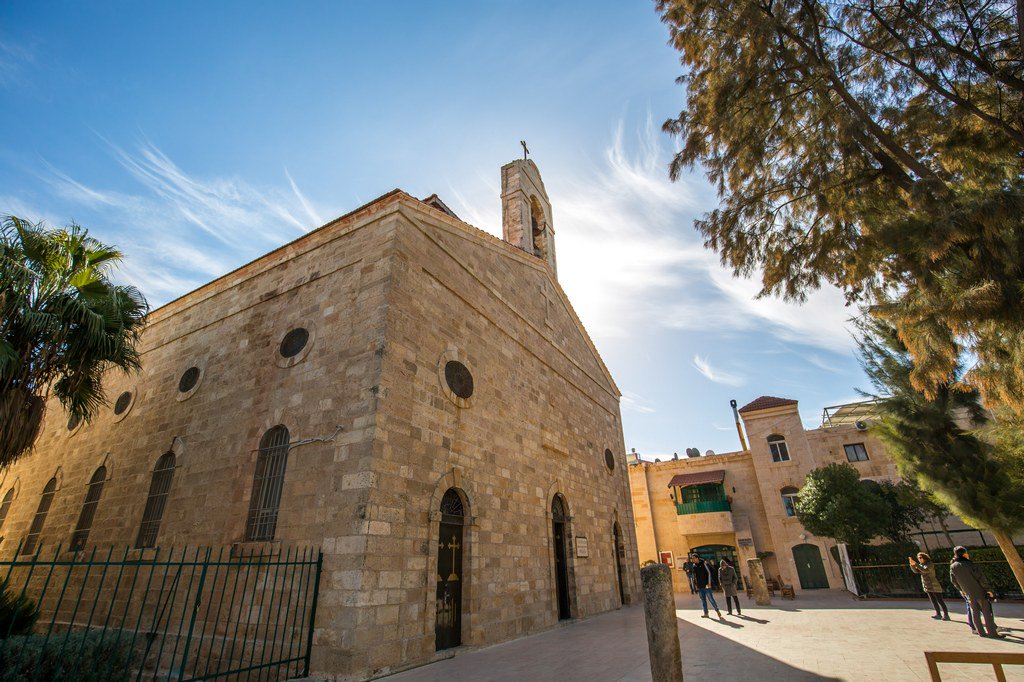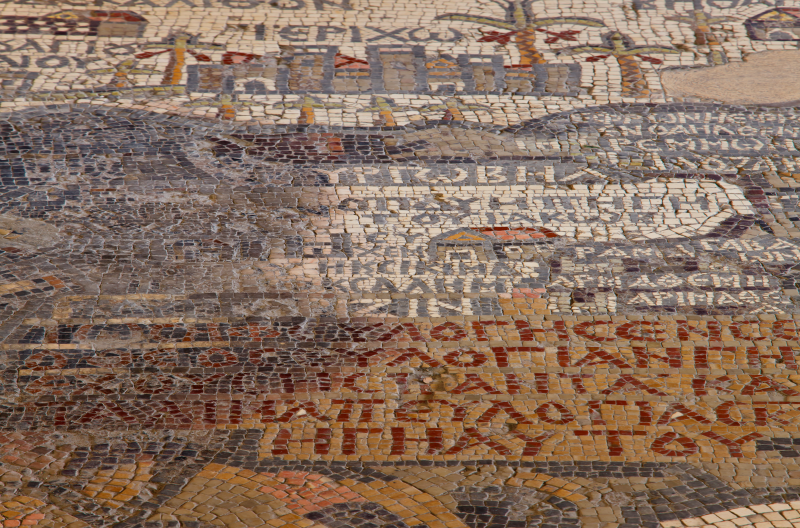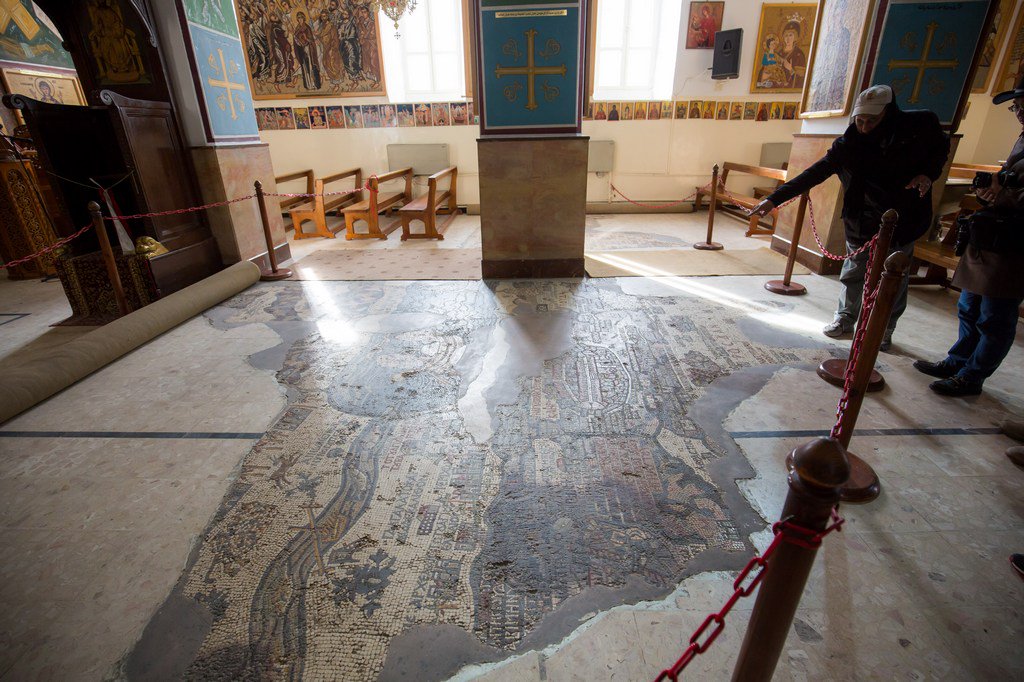Madaba – The City of Mosaics
Known in the Old Testament as Medeba, Madaba is located in central Jordan. Dubbed 'the City of Mosaics', some of the finest art of the early Christian centuries can still be seen in here and its surrounding regions. Between the 4th and 7th centuries AD, Madaba produced one of the world’s richest collection of the Byzantine mosaics, many of which are well-preserved.
Several church floor mosaics can still be seen in their original locations, while others are displayed in the Madaba Archaeological Park. The park houses Jordan’s oldest mosaic – a 1st century BC floor from the Herodian palace-fortress at Machaerus.
The Orthodox Church of Saint George houses a treasure of early Christianity. It is the home of the exquisite 6th century Byzantine mosaic map showing Jerusalem and other holy sites - the earliest religious map of the Holy Land in any form to survive from antiquity.
Church of Saint George
A Detail from one of the many famous mosaics found in and around Madaba
The church was built in 1896 AD, over the remains of a much earlier 6th century Byzantine church. The mosaic panel enclosing the Map was originally around 15.6 X 6m, 94 sq.m., only about a quarter of which is preserved
Other mosaic masterpieces found in the Church of the Virgin and the Apostles and in the Archaeological Museum depict a rampant profusion of flowers and plants, birds and fish, animals and exotic beasts, as well as scenes from mythology and the everyday pursuits of hunting, fishing and farming. Literally, hundreds of other mosaics from the 5th through the 7th centuries are scattered throughout Madaba's churches and homes.






